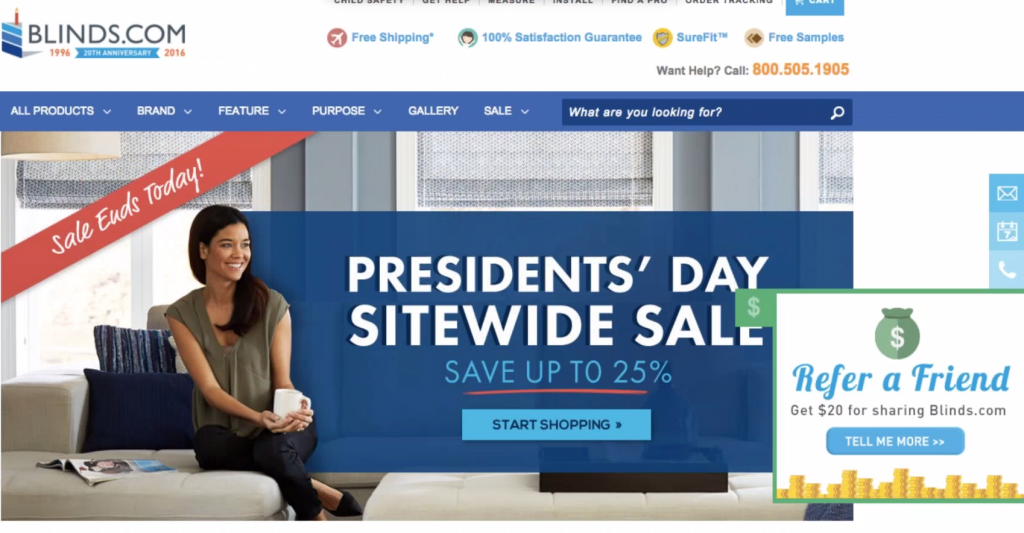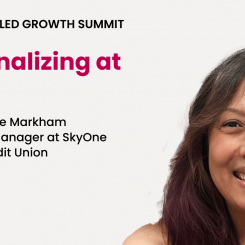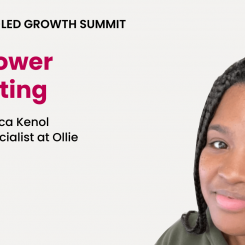Referral marketing has seen more than its fair share of outsized success stories. Tech companies like Dropbox and PayPal have achieved blow-out growth and reached millions of users without traditional advertising spend, all thanks to customer referrals.
But while a lot of marketers know that they should be digging into referral, many don’t know where to begin. For one, many relegate the success of referral to software products with viral distribution—that simply isn’t true. Less sexy businesses with high customer lifetime values, like banks and telecom have known about the power of referral for years.
In a landmark 2011 study, researchers from Wharton analyzed the referral program of a German bank, measuring the differences between referred customers and the average customer. They found that referred customers were 18% more likely to stick with the bank and generated 16% higher profits for the bank.
Referral doesn’t just get more customers—it also gets better customers. And today, there are more communication channels than ever that referral can penetrate organically, from traditional SMS to chat, and email to the social network. That has marketers itching to grab a piece of the pie, but many don’t know where to begin.
Referral isn’t super complex. It’s about customers sharing stuff they like with family and friends, which is as human an instinct as breathing.
In this guide, we’ll teach you how to lay the groundwork for word-of-mouth with an airtight referral program, and let your customers do the talking for you.
Open the Doors to Referral
A key part of winning with referral is tapping into everyday advocacy. Anyone who comes into contact with your brand, customer or not, can potentially share a referral, but only if you make them aware of the opportunity.
That’s why you need to make your referral marketing program a prominent part of your customers’ experience. They need to know the program exists in order to become advocates. It’s a simple concept, but lots of marketers just bury a link to their referral page in some corner of their website where no one can find it.

Uber is a great example of a company that’s leveraged the power of referral as a low-cost, ultra-effective customer acquisition channel—and it’s done so by giving referral pride of place in its mobile app. When new users log into the app for the first time, a modal window appears with the promise of “Free Rides” through referral. This messaging is repeated throughout a customer’s lifecycle. Every time users tap the navigation bar, the referral offer is right there for them to find.
Don’t just create a microsite for your referral marketing program and call it a day. Consider all the other ways you can make customers aware of your referral program:
- Put a referral call-to-action (CTA) on your site’s home page—you can use a lightbox like Uber, or put a button on your main menu. That makes customers 300% more likely to share a referral than if the CTA is on another page.
- Put a CTA on every user’s account page.
- Put one on the post-purchase page whenever someone buys. Extole’s internal data shows this increases referral shares 16x.
- Spread the news about referral on your social media accounts, blogs, or email newsletter.
- If you ship physical products, you can shout out your referral marketing program on the packaging.
Referral marketing starts with awareness, and these are all opportunities to fill your customers in and get them excited to become advocates.
Hyper-Personalize Referral
According to the familiarity principle, the more we see something, the more we like it. But as our lives grow increasingly saturated with ads, marketers can’t just rely on just getting up in their customers’ faces. They need to make sure that they’re establishing real connections.
Referral marketing can cut through the noise and create those connections because it’s a recommendation from a friend rather than a plug from a faceless company. Your referral program needs to accentuate that as much as possible—something as small as displaying a picture of the advocate’s face on the referral message boosts conversion by more than 3%. Take a look at how TaskRabbit does this.
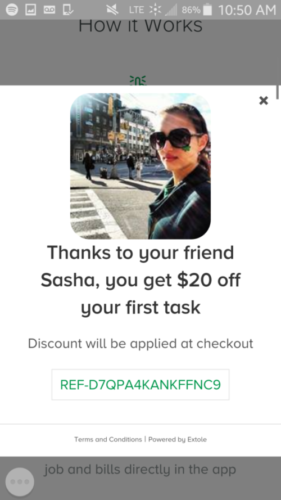
Outdoor gear provider Backcountry takes personalization up another notch and allows advocates to write their own personal message when they share, rather than sticking them with a pre-determined message some copywriter whipped up. That reinforces that the referral is coming from a friend, making them more likely to accept the referral.
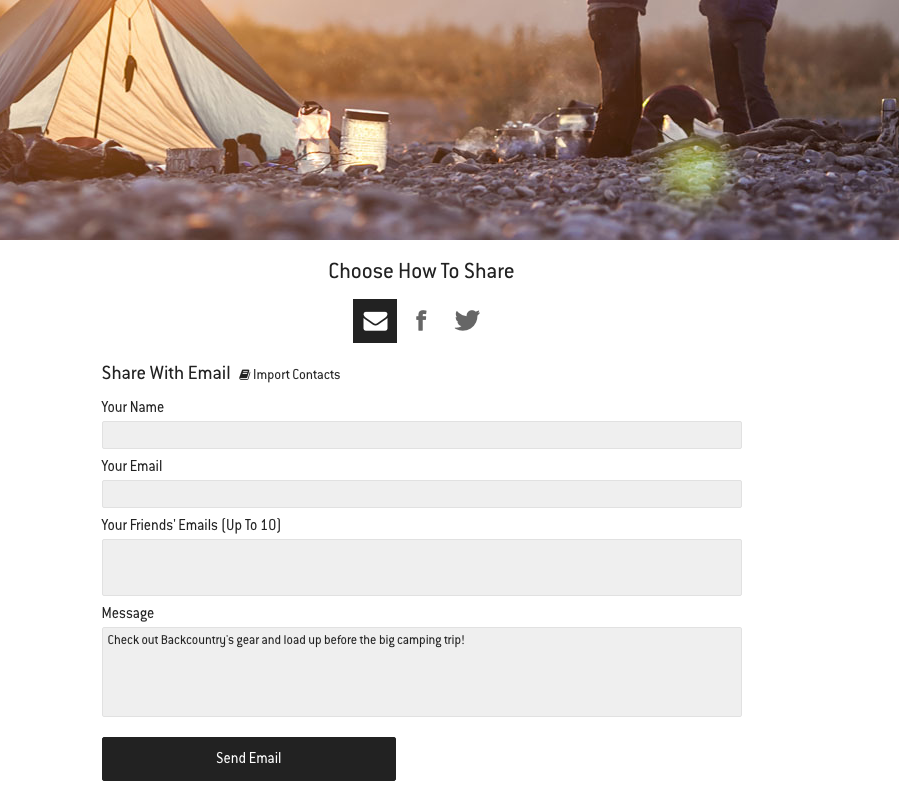
Some other personalization strategies include:
- Have the referral message come from the advocate’s personal email address rather than a generic “DoNotReply” address that your customers’ inboxes are already stuffed with. This ensures your referral doesn’t get lost in the shuffle.
- If you run a store that sells a lot of different products—say, like a clothing store—let the advocate suggest a specific product they think their friend would like when they send a referral. Most people understand their friends’ tastes, so this tactic lets you target them with a product they’re more likely to want.
Use the advocate’s name as a referral code. It’s easier to remember and also reinforces the friend-to-friend aspect of referral.
In marketing, it’s not enough to just get your brand in front of your customers’ eyeballs. You need to deliver a unique, impactful experience. Referral is able to do that in a unique way by tapping into the power of relationships—each of these strategies accentuates that.
Design For Frictionless Sharing
Psychology tells us it’s human nature to seek instant gratification, and this is more true in a world that’s “always on.” Companies like Amazon have made it possible to get virtually anything delivered in two days with the tap of a finger, raising the bar for what consumers expect in terms of ease and accessibility.
Remember that when you ask your advocates to refer their friends, you’re asking them a favor on behalf of your brand. You need to make sure that the referral experience is smooth and beautifully designed, and make referral a pleasurable experience for advocates and friends. As Geico would say, you need to make referral “so easy a caveman could do it.”
The key is to eliminate friction—any extra, unnecessary steps the advocate or new customer has to take. Examples of friction would be a referral CTA that’s difficult to find, a long, complicated referral code, or forcing users to create an account on your site before they can share or accept a referral. Those are all chances for the advocate or their friend to say, “Forget it.”
If you want to hold onto your customers’ attention, you need to minimize the number of steps they have to take. Some proven tactics include:
- When customers click your referral CTA, let them share the referral from that page rather than a dedicated landing page. Saving them the time it takes to load up a new page makes customers’ 4x more likely to refer.
- Give customers simple referral codes that are easy to remember and don’t take long to write.
- Enable advocates and new customers to collect their rewards immediately. That increases the excitement and gets both parties excited to keep on referring.
Apparel provider American Giant offers a great example of a seamless referral process.
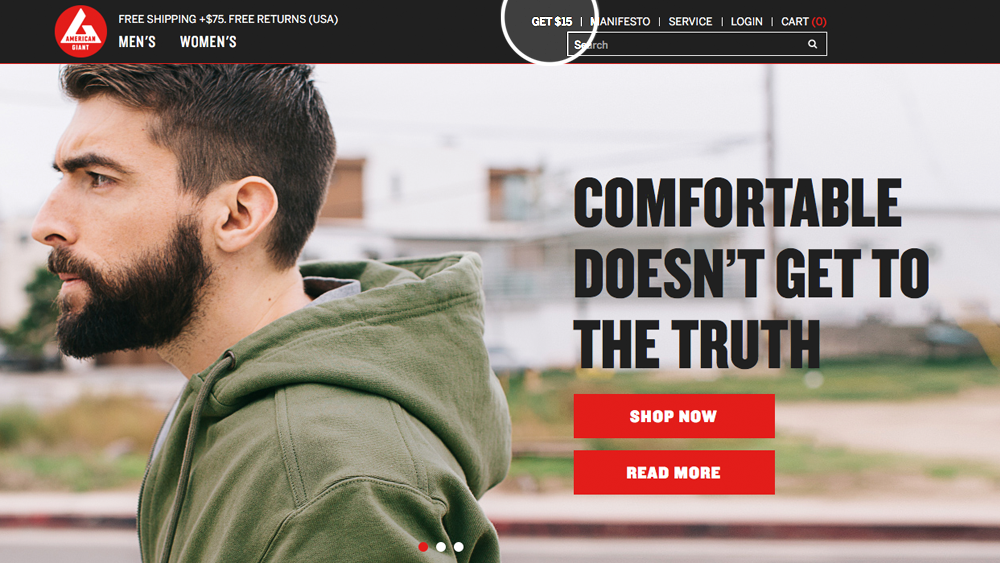
American Giant gets 10% of its sales from referral, which has allowed them to carve out a niche in the competitive fashion market without a brick and mortar presence. Their secret weapon is a referral marketing program that’s both beautiful and super easy to use. Advocates click the “Get $15” CTA (who wouldn’t click that?), send emails to friends from the very same page, and they’re done—it’s a cakewalk.
Mobile is your Referral Program’s Best Friend
The rise of mobile is changing the way people shop. In 2015, mobile e-commerce sales totaled over $104 Billion, up 38.7% from 2014. That’s why more and more advertisers are trying to reach customers on their smartphones. According to its Q1 2016 earnings report, 82% of Facebook’s $5.2 Billion in ad revenue came from mobile.
Referral marketing isn’t spared from this trend. Our internal research shows that 18% of referrals are sent from a mobile device, while 39% are accepted on one. You’ll miss out on those opportunities if your program doesn’t work just as well on the small screen as it does on the big one.
The same design principles from the last section apply tenfold when it comes to your mobile referral program. Your CTA needs to be even easier to find, the codes need to be simpler, and the rewards more obvious and immediate. Other mobile referral strategies include:
- When an advocate clicks the referral CTA on your mobile site, let them send the referral without having to go to a new page.
- Make it easy for advocates to share referrals via email, text, or messaging apps—the same ways they’d reach out to friends any other time.
- When someone accepts a referral on their phone, send them right to your website rather than force them to download your mobile app. This wouldn’t work for a company like Uber that depends on its app, but it’s a great play for, say, an e-commerce store.
Check out how last-minute hotel booking app Hotel Tonight does it to see some of these tactics in action:
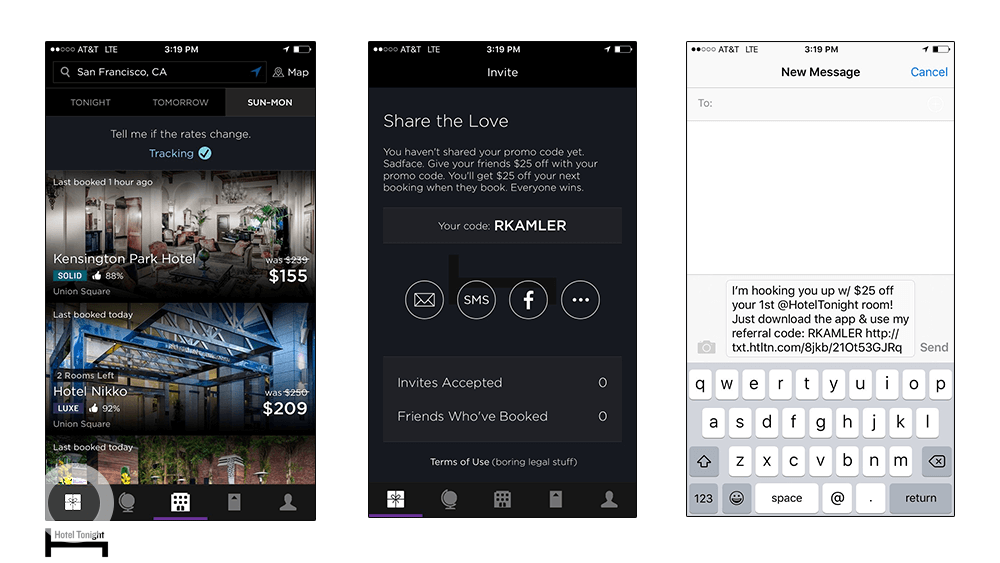
Hotel Tonight is going up against billion-dollar hotel-booking companies like Expedia and Priceline by betting big on a mobile-only model. Its app cross-references geolocation and room occupancy data to provide users with the best deals wherever they are. Thanks in large part to its sleekly-designed referral program, it’s been able to increase bookings over 300% over the last two years.
Give your Top Advocates the Superstar Treatment
The Pareto Principle states that in any system, 80% of the results come from 20% of the work or resources. Our internal research shows that it holds true in referral marketing—in most programs, 80% of referrals come from 20% of the advocates.
Those top advocates are the engine behind any great referral program, so you need to go out of your way to show your gratitude and keep them engaged. In a sociological study, researchers found that waiters who leave mints on customers’ bills get 23% higher tips. If you reciprocate with your best advocates and give them extra rewards, they’ll keep the new customers rolling in.
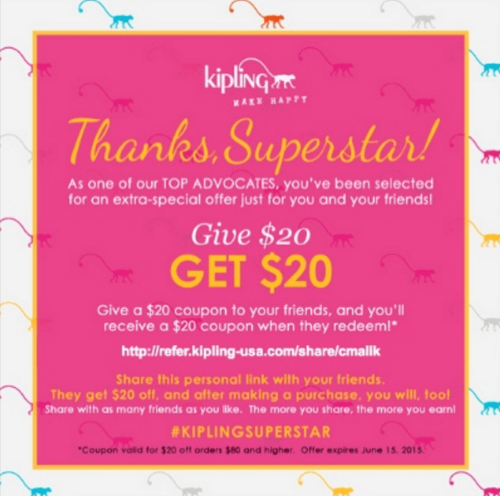
Handbag provider Kipling does this by increasing the reward amounts for its most prolific advocates. That shows appreciation and sustains their desire to share referrals.
Track Referral Metrics to Tighten Your Funnel
You can’t just whip up a referral marketing program, put it on your site, and expect immediate growth. Like any other marketing channel, you need to obsessively measure its success, iterate, and make sure it’s constantly improving. And our referral funnel gives you all the metrics you need to do that:
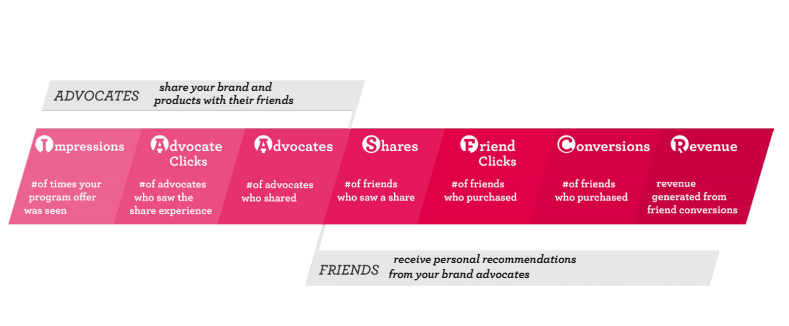
The funnel highlights one of the best parts about referral: It’s a clearly defined, quantifiable step-by-step process. Each part of the funnel can be measured and optimized, and you can easily tell what needs to change.
That’s a huge advantage referral has over other marketing methods. Take Google Adwords for example. Their cost per click has risen over 40% since 2012, you’re never sure exactly how much you’ll spend, and there’s no clear path to better results. Same with Facebook ads, SEO, and countless other tactics—improving takes guesswork. But any time referral is underperforming, you can dig into the analytics, find the bottleneck, and straighten out your funnel.
For example, if I saw that my referral CTA was getting plenty of advocate clicks, but not many shares, I would know that something about the program isn’t enticing enough—they’re looking into the opportunity, but they’re not biting. I could test a number of ideas to fix that, from a higher reward, to more compelling copy in the referral message based on how customers describe my product on social media. The referral funnel gives you the data to attack these issues with a focus.
Case Study: Airbnb
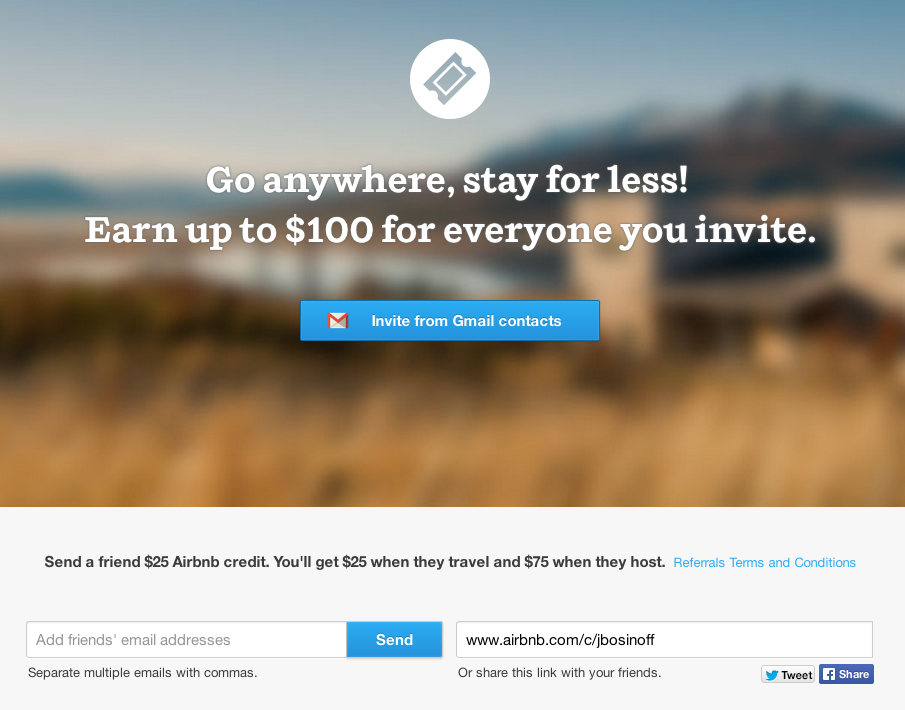
Airbnb knew from the success of companies like Dropbox and PayPal that referral marketing could be a powerful source of new customers, but the program it established way back in 2011 wasn’t getting results. So in 2014, the company tasked a team of engineers for a complete overhaul.
The team started by breaking down the referral path, from advocate to new customer, into a series of more than 20 different steps. By buckling down and optimizing each step, the new referral program brought a 300% increase in daily signups and bookings.
In order to keep track of their progress and drive continuous improvement, the team chose five key metrics to track, each of which can easily be linked to a stage of the referral funnel:
- Monthly active users sending invites (Advocates stage)
- Invitees per Inviter (Shares)
- Conversion Rate to New User (Friend clicks)
- Conversion Rate to New Guest (Conversions and Revenue)
- Conversion Rate to New Host (Conversions and Revenue)
By tracking those numbers, Airbnb was able to see where in the referral process they were losing customers and update it accordingly. For example, to boost “number of invitees per inviter,” the team offered email address book imports on the referral page, which made it easy for advocates to sift through their contacts and find the perfect matches for Airbnb.
That core set of winning metrics gave the Airbnb team a simple framework to constantly measure and improve the success of their referral program.
Find the Rewards Structure that Works for You
A common myth about referral is that the only reason advocates share is to get the reward. In reality, advocates are only willing to share products they love and know their friends will love too. After all, why would someone refer a friend to a poor product if they only get *more of that product* in return? The reward is simply an extra incentive to grease the wheels and get people referring faster and more often.
That’s why when it comes to rewards, bigger doesn’t always mean more sharing. For example, one online marketplace using Extole found that a gift card reward of $10 prompted more referral-sharing than a gift card of $15 or $20. Customers don’t like to feel like they’re profiting off of their friends or only sharing to get a reward, so there’s no need to break the bank.
Looking beyond the size of the incentives, there are three basic reward structures:
- Dual-sided rewards both the advocate and the new customer.
- Advocate-only rewards just the advocate.
- New customer-only rewards just the new customer.
For most companies, the dual-sided structure drives the most referrals. It gives advocates an incentive to share but doesn’t feel totally transactional because, hey, their friend gets a reward too. But other structures could make sense depending on your brand or product offerings.
Finally, you need to structure your rewards so that you’re acquiring customers efficiently. When you consider the ratio of customer acquisition cost (CAC) to lifetime value (LTV), referral is typically one of the most cost-effective ways to get new customers. Optimize your rewards so that you get the full benefit.
Case Study: Maple
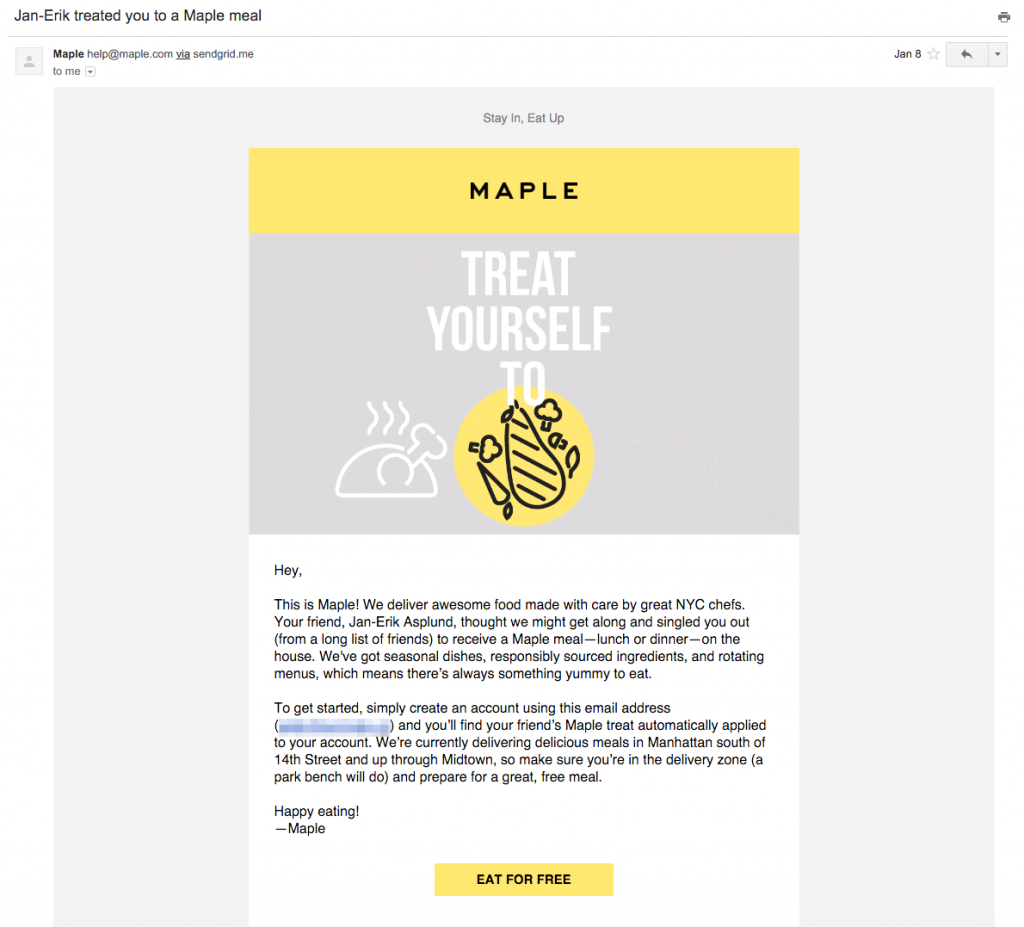
Maple is a relatively new NYC food delivery service that has tapped into referral to augment growth. The program operates under the new customer-only referral model, offering newly-referred diners $15 off (the equivalent of one Maple dinner. Lunch is $12).
Based on Maple’s estimated customer lifespan and the number of orders most people will make per week, Maple is making $7.13 to every $1 it spends acquiring customers through referral. So right off the bat, their referral program turns a healthy profit.
The new customer-only reward also makes perfect sense for a food delivery company. People’s food tastes and standards vary a ton, so new customers are more likely to trust that the advocate genuinely thinks they’ll like Maple since they’re getting nothing in return.
When in Doubt A/B Test
Today’s marketers approach their craft with scientific rigor, and no strategy is more emblematic of that than the A/B test. It’s a simple experiment: You make a tweak to a website or app, unleash both versions to the world, and see which one gets better results.
The difference with referral marketing is that you can be much more focused in your testing. Every CTA, referral message, or visual design you test is more explicitly connected with a specific goal based on where it is in the referral funnel, so your results are more concrete.
Case Study: Blinds.com
Blinds.com offers an easy way to buy beautiful, reasonably priced window blinds online. They set up a simple referral program in which advocates got $20 for referring friends to the site. The whole company was excited, but when they got the program up and running, the initial results were underwhelming.
So they decided to get back to their brand’s roots. A huge part of the Blinds.com experience is that customers get to work with a “design consultant” to find the perfect set of blinds, yet their referral program didn’t incorporate that at all. So Blinds.com revamped it so that advocates could refer their friends to the specific consultant they worked with. In A/B testing, the new program posted a whopping 82% new customer conversion rate, drastically outperforming the old one.
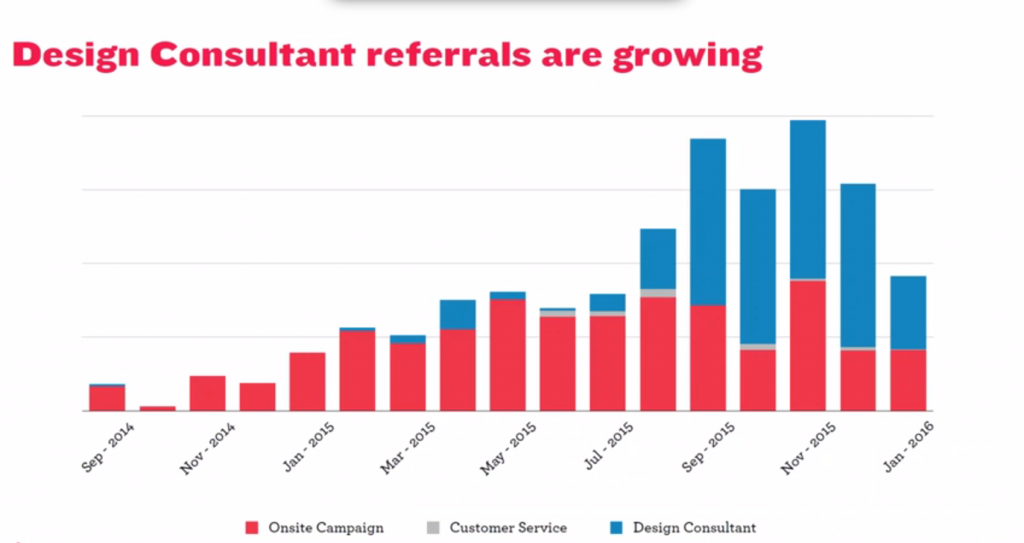
They didn’t stop there. Next, Blinds.com tested a newly designed referral CTA and saw a nearly 40% increase in Referral Index. A future test of a Visa-branded gift card reward versus a generic gift card prompted another 50% rise.
By refusing to accept the status quo and relentlessly testing new ideas, Blinds.com has been able to ensure that its referral program is always getting better and driving more customers through the referral funnel.
Follow the Flywheel
Referral marketing is the only channel that gives you a direct path from word of mouth buzz to more customers and higher revenue. It enables the people who love your company to pull in friends they know will feel the same way. Those highly engaged customers can then reach out to their own networks, creating a dramatic flywheel effect where referred customers refer their friends in a virtuous cycle.
Too many marketers miss out on the opportunity. Many don’t even bother with referral marketing because they think it’s just a one-in-a-million shot to go viral à la PayPal. On the other end of the spectrum, many of them mistake referral marketing for a simple transaction. They think they just need to dangle a reward in front of customers and watch the new business roll in.
Neither is correct. Anyone can succeed with referral, but only if you attack it with the same analytical rigor and customer experience-savvy you’d apply to any other marketing channel.

